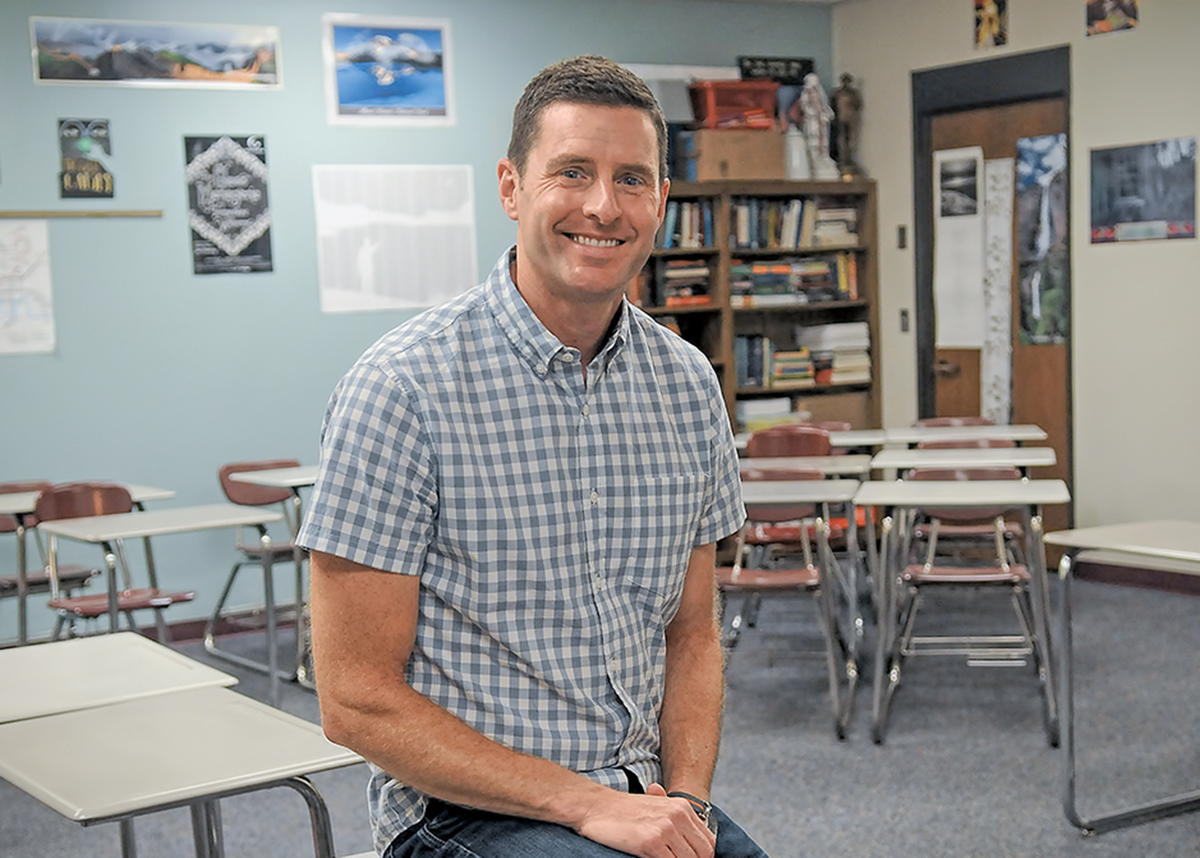When Corey Bulman accepted his first teaching job in 2000, he wasn’t sure what to expect. But it was a good fit. Seventeen years later, he’s still there.
Bulman, M.Ed. ’00, teaches English and language arts at Mound Westonka High School in Minnetrista, a town of about 7,000 on the west edge of the Twin Cities metro area. On the path from rookie teacher to school role model, Bulman became an important part of the community.
“I went all in with high school because I felt like I was going to have a direct impact,” he says. “People become your family, and you grow up with them.”
So when he was named Minnesota Teacher of the Year this spring, Bulman knew whom to thank—the award reflects many years of hard work by his school’s close-knit staff.
“It’s the culmination of almost two decades of work that a lot of us have been doing together,” he says. “It’s an affirmation of what we’re doing with our students.”
Growing up in small-town Wisconsin, Bulman wasn’t sure what path he wanted to follow. Many of his school years were not easy, but his teachers made a difference. When seniors were asked to tell the local newspaper what career they would pursue, Bulman wrote teacher.
As an undergraduate at the University of Minnesota, Bulman explored a few areas before diving into English, which he says changed everything. Though he’d always loved reading, the analytical and critical aspects of literature were a whole new world to him.
When Bulman began his teacher licensure program in CEHD, he met professor Richard Beach in the Department of Curriculum and Instruction, who became a valued mentor.
“Rick taught us how to build thoughtful lesson plans and to bring multiple teaching approaches to the classroom,” Bulman says. “He preached the importance that inquiry plays in a student’s education.”
Though some things have changed about Bulman’s teaching style over the years, he stands by the importance of multiple approaches. Flexibility, mixed with plenty of compassion, is how he makes the most of his time in the classroom.
“I don’t come in with a set expectation of what the answer is,” he says. “I want the kids to be creating meaning along with me.”
Bulman says he’s often asked how he deals with the difficulties of reaching “kids today,” given the impact of technology, economics, politics, and the like.
“Kids today are kids as they’ve always existed,” he argues. “If you meet them where they are and you honor their experiences, you usually will have a really good relationship.”
Bulman believes in the power of language arts in every child’s education.
“I think that books are a test run for life,” he says. “Reading allows kids to pick out who they do and don’t want to be. In English, you get to talk about the stuff of life. It teaches humanity, sympathy, and empathy, and it makes you do it in a really logical way.”
Though he loves teaching stories like Frankenstein, King Lear, and To Kill a Mockingbird, Bulman also knows that language arts education is about more than good books. As much as he may love reading and writing, he quickly realized that not all of his students would share his passion—and that was okay.
“I had to come to terms with the idea that the content wasn’t going to be the answer for the kids,” he says. “Connection was.”
Learn more about Corey Bulman, the Department of Curriculum and Instruction, and the English education program.
Story by Ellen Fee | Photo by Dawn Villella | Fall 2017
 Corey Bulman
Corey Bulman